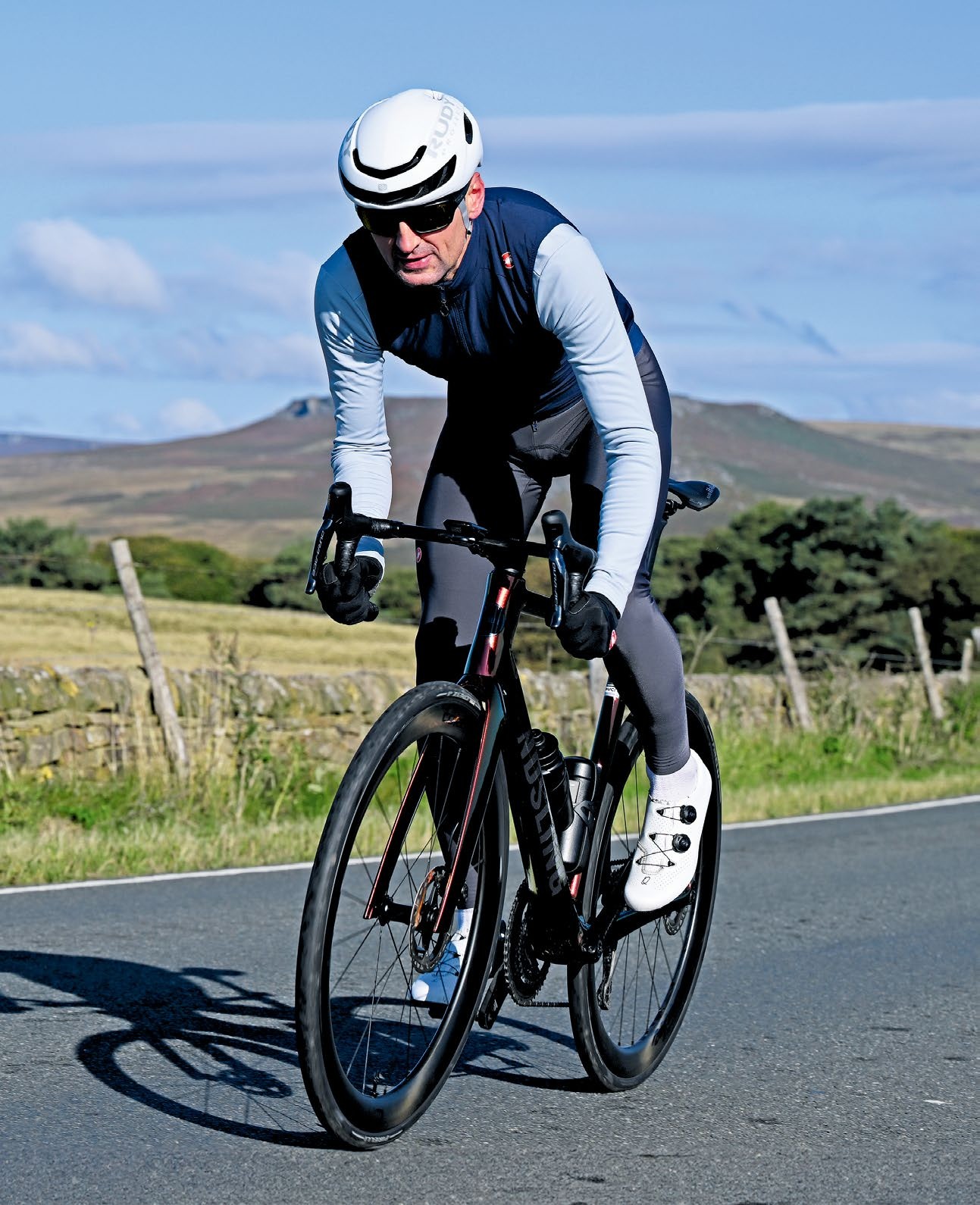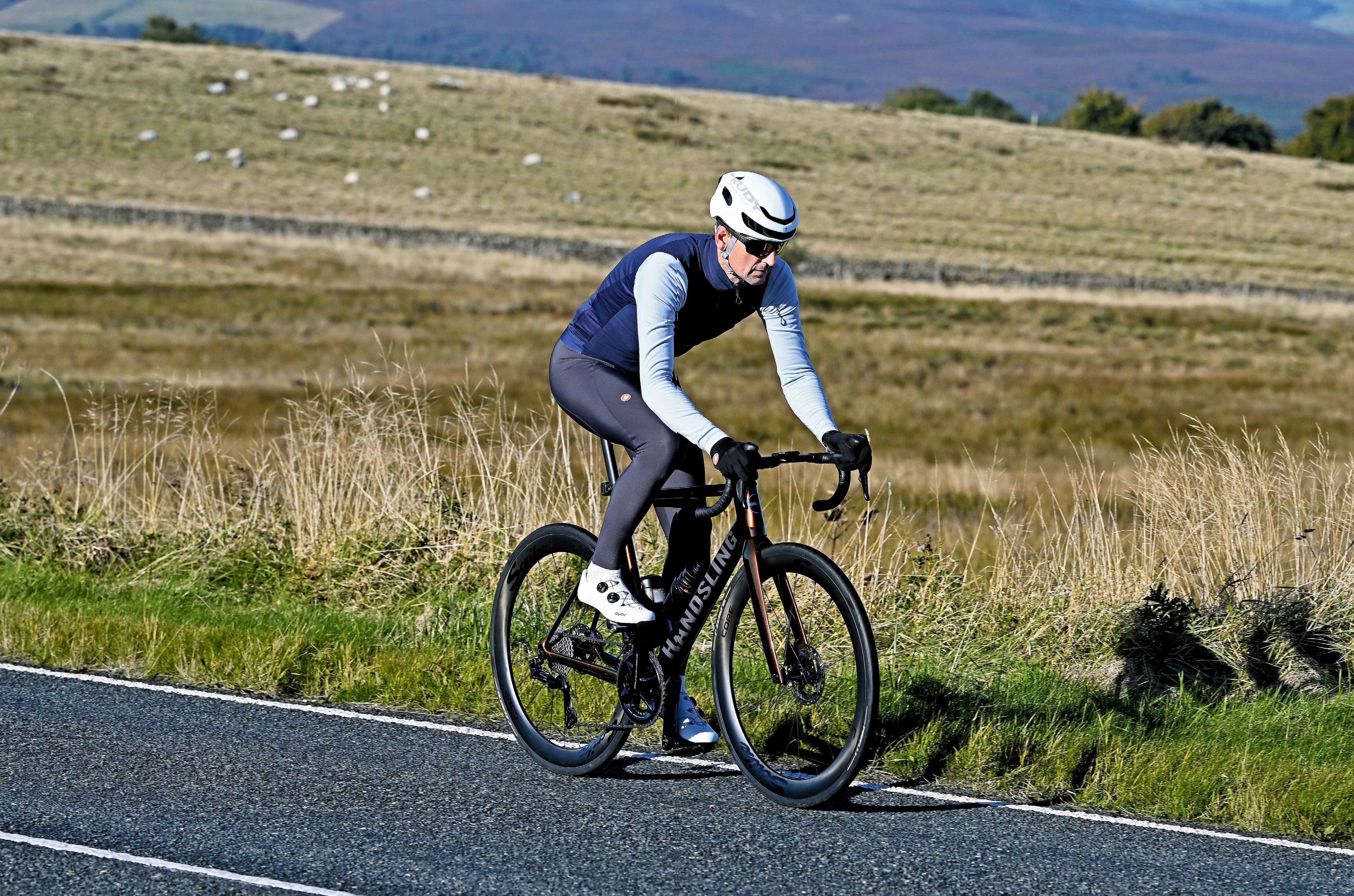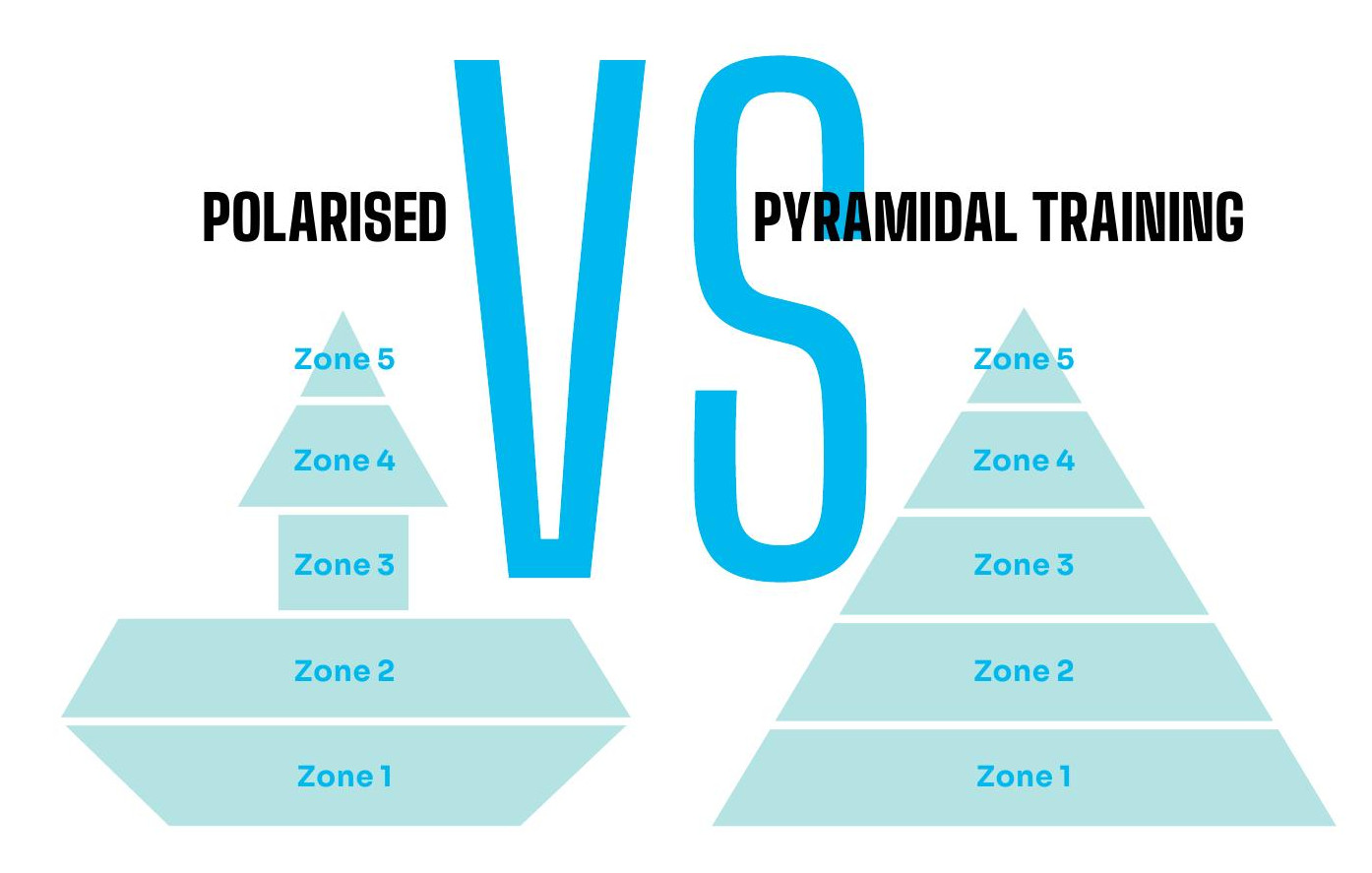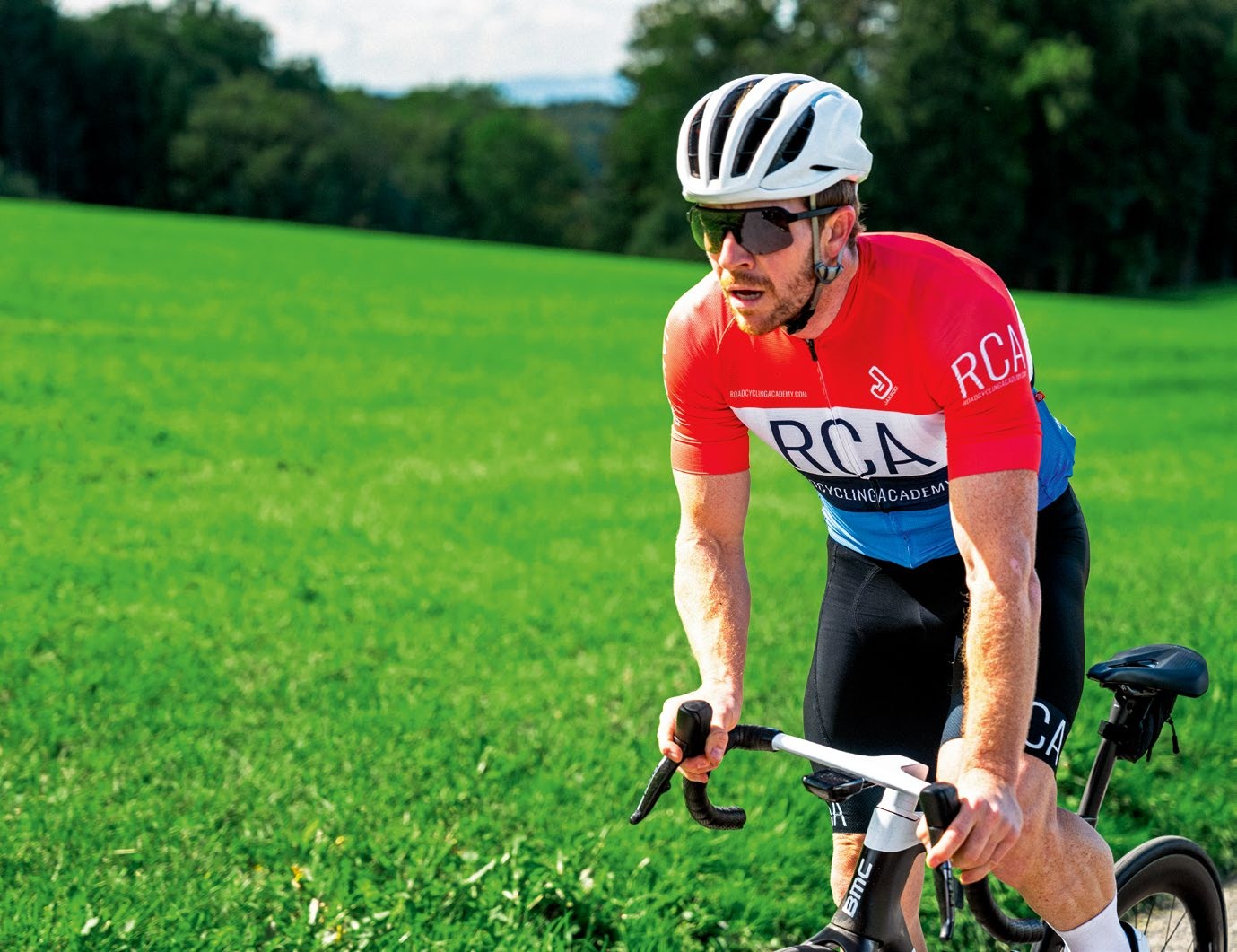The mantra of polarised coaching is ‘go simple or go exhausting – by no means in between’. However what if that’s all flawed? Rob Kemp meets the coach who says the center is the place the magic occurs
For greater than 20 years, polarised coaching has dominated endurance sports activities. The mannequin – popularised by physiologist Stephen Seiler – calls for that athletes spend about 80% of their coaching at low depth, and 20% at very excessive depth. Something within the center, the idea goes, is not any man’s land: too exhausting to get well from, too simple to stimulate actual variations.
It’s a easy, compelling message – particularly in an period obsessive about information purity and ideal zone distribution. However what if every thing we thought we knew about find out how to divvy up our effort throughout the week was flawed?

Tempo coaching is the important thing to real-world endurance
(Picture credit score: Unknown)
Steve Neal, a Canadian coach with 37 years in endurance sport, doesn’t consider in a single “one-size-fits-all” mannequin. As an alternative, he adapts coaching to the season and the athlete’s particular wants – generally pyramidal, generally polarised. The important thing, Neal says, is deciding on the appropriate technique to maneuver health within the desired course.
Whereas pyramidal coaching usually emphasises tempo and so-called “center” intensities, Neal doesn’t view this mid-level work zone as wasted effort. Used appropriately, it may be the engine room of real-world efficiency.
“WHEN I LOOK AT RIDERS’ DATA, WHAT I OFTEN SEE IS PYRAMIDAL TRAINING I OFTEN SEE NOT POLARISED”
Steve Neal, Canadian coach
“I’ve been doing this for a very long time, and at any time when I have a look at riders’ information – whether or not it’s in TrainingPeaks, INSCYD, or Xert – what I usually see is pyramidal coaching, not polarised,” Neal says. “Folks discuss 80/20, however in actuality, if you analyse it correctly with energy information, my athletes are sometimes at extra like 95/5. Even once they’re racing stage races, doing two-and-a-half to 3 hours a day for per week, they very hardly ever break 90/10.”
If Neal is correct, the implications are large. Most of us is perhaps telling ourselves we’re doing polarised coaching whereas truly implementing a construction with a broader base, heftier center and far sharper tip – higher described as pyramidal. Even at professional stage, the roots of the polarised mannequin could also be shakier than most realise.

(Picture credit score: Images ANDY JONES & ANDREW SYDENHAM)
Neal’s method blends old-school teaching knowledge with new-school concepts. His mentor Juerg Feldmann, a Swiss velocity skater who later coached Canadian mountain bike world champions and Olympians, taught him to mix rigorous fundamentals with modern strategies. “A few of the strategies I realized from Juerg years in the past are solely simply being mentioned extensively at the moment. For instance, respiration [breath] coaching – he was utilizing it over 30 years in the past.”
Neal has constructed on these modern foundations. Not like many fashionable coaches, he doesn’t take coaching software program outputs at face worth. “I feel software program does an amazing job of the higher-intensity coaching zones, however I nonetheless want to make use of lactate testing to dial within the coaching under threshold.”
On the coronary heart of Neal’s philosophy – and his success in elevating the efficiency of elite riders throughout diversified disciplines – is pyramidal coaching. He has discovered that this method particularly fits athletes aged over 40, who make up 95% of his teaching purchasers.
At its core, pyramidal coaching means loads of simple endurance work, a strong dose of tempo or “center” depth, and only a small quantity of exhausting effort at threshold or VO2max. Image a pyramid: a large cardio base that narrows as depth rises, with that center zone getting actual consideration.
Not like extra strictly polarised fashions, pyramidal coaching doesn’t keep away from the “gray zone” – it makes sensible use of it.
Neal’s cyclists use pyramidal coaching to construct cardio sturdiness and fatigue resistance, bettering their means to journey at or close to race tempo for prolonged intervals. “The important thing,” Neal says, “is wanting on the precise intensities that may drive efficiency. Many riders and coaches neglect to think about this, and as a substitute prepare in zones that look proper on paper however don’t match what racing truly calls for.” He factors out that in stage races and Gran Fondos, riders usually spend hours at tempo, which for Neal sits inside Zone 3.

(Picture credit score: Unknown)
He defines his zones by coronary heart fee (see field), refined with lactate, metabolic, or muscle oxygen testing the place potential. When he prescribes pyramidal coaching, the main focus is on Zone 2a/2b endurance and Zone 3 tempo, with simply sufficient excessive depth to keep up race readiness. This differs sharply from polarised coaching, which avoids tempo virtually totally. “One of many largest misconceptions is that Zones 2 and three are essentially totally different,” Neal explains. “They’re not – it depends upon the particular person.
That’s why I measure LT1, LT2, and some extent in between that I name the ‘steadiness level’.” That steadiness level, he says, can shift dramatically even when the thresholds themselves barely transfer. “Generally I solely transfer an athlete’s LT1 or LT2 by 5 watts throughout a complete season, however that steadiness level can shift by 30 or 40 watts – and that’s what makes individuals sooner.” In different phrases, the athlete’s usable vary of efficiency expands, and they’re able to journey at nearer to threshold (LT2) for longer intervals of time, even when the brink itself doesn’t transfer.
Have we been getting all of it flawed?
For Neal, the whole polarised mannequin rests on a methodological error. “Polarised coaching was studied on the elite stage in rowing, operating and biking – however solely utilizing coronary heart fee,” he says. “The issue is, coronary heart fee is normally a zone decrease than energy.” He alludes to the truth that coronary heart fee doesn’t at all times match how exhausting the legs are pushing: it lags behind modifications in effort, and drifts with fatigue or warmth.
“So these research most likely simply confirmed what we now name pyramidal coaching. That’s why I feel evaluating pyramidal and polarised is deceptive – as a result of most of what we expect we find out about polarised is flawed. What I actually discover in my athletes isn’t an absence of low-intensity work, however that the supposed 15–20% above threshold simply isn’t there.” That’s a daring declare, however Neal has proof on his facet. Analyse a 12 months of coaching from virtually any critical rider, he says, and also you’ll discover pyramidal, not polarised, distributions.
“Even elite athletes individuals assume are polarised are literally pyramidal when you monitor them correctly.”
So what does pyramidal coaching truly obtain? Neal factors to 3 key variations. First, cardio improvement: by coaching close to the steadiness level, the place fats and carbohydrate contribute in roughly equal measure, riders can push their cardio system to change into extra environment friendly. Second, sturdiness:
“If I can get somebody’s tempo energy nearer to 75% of their VO2max energy, they may race higher,” Neal says. “Even when their VO2max quantity drops barely, their means to maintain energy over time improves dramatically.” Lastly, metabolic effectivity: driving lengthy at tempo teaches the physique to handle gasoline higher, delaying fatigue.
TRAINING ZONES
As outlined by Steve Neal
- Zone 1: Restoration
- Zone 2a: Endurance, 60–70% max HR
- Zone 2b: Regular endurance, 65–75% max HR
- Zone 3: Tempo, or “lactate steadiness level,” 78–83% max HR
- Zone 4: Threshold, 85–90% max HR
- Zone 5: VO2max, 90–95% max HR
- Zone 6: Dash/ torque efforts
The beneficial properties might not present up as flashy VO2max will increase, however they win races. “If somebody has a VO2max energy of 350 watts, I don’t need solely their five-minute energy to go up,” Neal explains. “I would like their tempo or steadiness level to be 75% of that, i.e. round 262 watts. If it was 220 watts to start with, and I can transfer it up by 40 watts, they’ll race sooner – even when their VO2max energy drops.”
Who advantages most from pyramidal coaching? Neal says masters athletes with restricted hours see large beneficial properties. “One among my riders is 45, Canadian marathon MTB champion, at all times prime three in cross-country,” he says. “Over a 12 months, his threshold has gone from 300 watts to round 310–320. That may not appear large, however 12 months after 12 months, at his age, nonetheless successful – it’s large.”
Neal offers a UK instance: Sam, a brand new dad, working full-time, coaching simply eight to 9 hours per week. For 2 years he caught with endurance and tempo, and have become rock-solid. “He may sit at 300 watts in Zone 3, respiration regular, coronary heart fee beneath 83%, and name it simple. That’s sturdiness. That’s why pyramidal coaching works.”
The chance, Neal cautions, isn’t simply overtraining, it’s focusing an excessive amount of on threshold work with out steadiness. “Merely piling on threshold periods doesn’t truly enhance threshold,” he explains. Carried out to extra, or executed poorly, that form of coaching may push an athlete towards being overly glycolytic, eroding their means to go lengthy and journey sturdy within the tempo zone. Analysis has proven that extreme threshold work can blunt beneficial properties at that depth. As an alternative, riders ought to construct health at sub-threshold, says Neal, pushing the ceiling up from under.

Center-intensity rides carry your threshold up from under
(Picture credit score: Unknown)
Holding again requires persistence and self-discipline. Some riders merely discover pyramidal coaching boring, concedes Neal, recalling a proficient UK rider who improved 8-10% in three months on his system – however give up as a result of he didn’t wish to skip smash-fest group rides.
Making middle-intensity coaching a part of the weekly schedule is nonnegotiable for Neal – it’s the place efficiency is constructed. The simple miles maintain you regular; the all-out efforts sharpen you. However the work that makes you quicker, stronger, and more durable to crack? That occurs in between.
After 20 years of polarised orthodoxy, that concept might really feel heretical. But the info – and the riders – maintain proving him proper. The reality is that real-world biking isn’t tidy or binary; it’s a continuum of effort, fatigue and adaptation. Someplace between too simple and too exhausting lies the zone that holds all of it collectively – not a gray space, however gold.
Extra center floor labored wonders for me

An early block of pyramidal coaching can construct the bottom for later success
(Picture credit score: Unknown)
Cameron Nicholls, 41, from the Sunshine Coast, Queensland, Australia recounts how switching from polarised coaching to a extra middle-heavy pyramidal mannequin paid dividends.
“I used to show my nostril up at sweetspot coaching. I used to be strictly workforce Zone 2 and high-intensity, plus VO2max and big-gear efforts. Nothing within the center. I spent most of my coaching at low depth and the remaining within the harm locker.
“After deciding to strive one thing new, I labored with coach Ryan Thomas and adopted a hybrid method. The primary six weeks had been pyramidal, and the remaining six weeks had been polarised. Within the first six weeks, I used to be primarily doing Zone 2 rides and sweetspot efforts, sitting within the gray someplace between Zones 3 and 4.
“Coming from a polarised mannequin, it was not a coaching philosophy I had thought-about. However ‘no man’s land’ wasn’t as unhealthy as I believed. Within the remaining six weeks, we ramped up the depth and added VO2max and anaerobic HIIT periods. My bread-and-butter Zone 2 rides had been at all times maintained.
“At 41, I achieved private bests in three of 4 key power-to-weight segments, and I had nice racing outcomes. Whether or not the pyramidal method or the hybrid mannequin takes the credit score, I can’t say for positive. But it surely’s the one factor I actually modified within the final 10 years. It delivered a number of the finest outcomes of my profession.”
PYRAMID IN PRACTICE
So what does pyramidal coaching appear to be in observe?
● Base section: Plenty of Zone 2 endurance, with managed quantities of Zone 3 tempo.
● Construct section: For a rider coaching round eight hours per week, purpose to carry tempo quantity to 3 to 4 hours weekly, whereas protecting upkeep doses of excessive depth each week or two. Relying on the athlete and the calls for of their goal occasion, this section might also contain backing off some tempo in favour of extra endurance work, or shifting focus in direction of race-specific intensities.
● Race season: Maintain the pyramidal distribution, layering in particular depth for occasions.
● A typical week for an 8-10-hour newbie may embrace:
– 2-3 regular endurance rides (Zones 2a/2b)
– 2 tempo periods (Zone 3, 45-90 minutes)
– 1 group journey or race-specific session (touching Zone 4/5)
– 1 simple spin or restoration journey
● Common testing is essential, Neal insists. “Lots of my athletes personal a lactate meter and/or a muscle oxygen sensor,” he says. “House testing helps them monitor the place they’re at whereas saving cash on lab periods.”